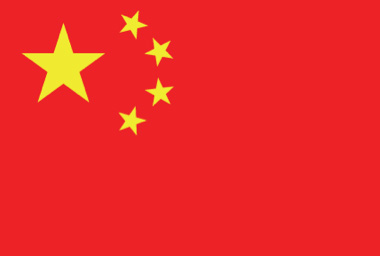Hong Kong-listed AIA Group Ltd., whose shares hit fresh records this month, now boasts a market capitalization of around $123 billion, more than three times that of AIG.
AIA’s rise highlights the size and promise of Chinese financial services—and what AIG missed out on after it was forced to sell the business to repay a huge government bailout.
“China is the place to be for insurers,” said Victoria Mio, chief investment officer for China at Robeco. Ms. Mio said a burgeoning middle class was more aware of insurance and health-care products, and had more money to spend on them.
However, the company has to tread carefully, since a large chunk of its growth is thanks to mainland Chinese looking to build offshore portfolios—a sensitive area for China’s government.
AIA says more than half the value of new business it generates in Hong Kong comes from mainland customers. This measure is a key yardstick for AIA, reflecting expected total earnings from new policies, after adjusting for factors such as required capital reserves.
The same demand also benefits rivals operating in the city such as London-listed Prudential PLC, which previously tried to buy AIA.
Hong Kong doesn’t use the Chinese yuan but has its own currency, the Hong Kong dollar, which is pegged to the U.S. dollar. Beijing limits personal transfers out of China to roughly $50,000 a year.
In 2016, as China battled a weakening yuan and capital outflows, an increasing number of mainland Chinese residents were traveling to Hong Kong to buy insurance policies, particularly those with investment functions. As using credit cards to buy insurance became a popular loophole to shift more funds abroad, dominant payment-card company China UnionPay Co. began enforcing transaction limits on offshore insurance purchases, and later limited these to accident- and medical-related policies.
Those limits remain in place but the overall amounts spent by mainlanders buying policies in Hong Kong have somewhat recovered after Beijing’s capital-flight crackdown, according to the city’s insurance regulator. The rebound comes as Chinese consumers seek to protect themselves from rising economic uncertainty. In many cases, buyers can use existing hard-currency holdings to buy policies.
AIA and its peers recruit well-educated mainland Chinese staff, particularly graduates of Hong Kong universities, to sell products to their compatriots, according to analysts and insurance agents. These individuals’ connections back home are seen as giving the companies an edge in winning business from mainland Chinese clients.
However, there are legal limits on what agents can say and do. They can talk about the benefits of insurance, but cannot directly promote or solicit Hong Kong business while on the mainland, nor sign contracts with clients there, said Zhu Chao, chief executive at Asset Pro Group Ltd.
Mr. Zhu, whose Hong Kong-based company works with wealth-management and insurance firms in China and abroad, said after seeing friends and relatives buy offshore insurance, “more Chinese customers are jumping on the bandwagon.”
He said there was genuine demand for protection, for example, to guard against the cost of treating serious illnesses. And offshore policies, typically in U.S. dollars, were also viewed by many Chinese customers as a way to diversify their investments.
Priscilla Chen, 26, is from Zhejiang province in eastern China, and is studying for a Ph.D. in Hong Kong. In March, she bought a critical-illness policy, with savings elements, from AIA.
“Having U.S. dollar-denominated insurance coverage not only gives me protection but would also help me hedge against any currency risk in the future,” said Ms. Chen. “I would also recommend my friends and relatives to buy policies offshore. The insurers are better managed and their products offer better returns.”
China’s insurance market is already the world’s second-largest by premium volume, surpassing Japan in 2017, and the Swiss Re Institute estimates it will overtake the U.S. by the mid-2030s.
AIG spun off AIA in a 2010 listing, valuing the unit at $30.5 billion, after the U.S. government committed up to $182.3 billion of support for AIG during the financial crisis. The U.S. company sold its remaining shares in AIA in several stages in 2012.
Once one of the world’s most valuable insurers, AIG now mainly consists of a global property-and-casualty insurance business and a U.S. life insurance and annuity business.
In addition to its large Hong Kong business, AIA is the only foreign insurer working in the mainland without a local partner. AIA has wholly owned operations in Beijing, Shanghai, Shenzhen, and the provinces of Guangdong and Jiangsu, and earlier this year won permission to start up in two more cities.
Even before factoring in the benefits of any expansion, AIA’s China business is likely to see further rapid growth. BNP Paribas analyst Dominic Chan said he expects AIA’s onshore business to keep growing more than 40% annually, as it recruits more highly educated agents, and undertakes other initiatives such as partnering with WeDoctor, a health care startup backed by Tencent Holdings Ltd.
Further out, CLSA analysts led by Lloyd Xu said Beijing’s plans to liberalize life insurance from 2021 could allow AIA to operate nationwide, pending provincial approvals.













